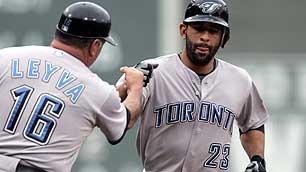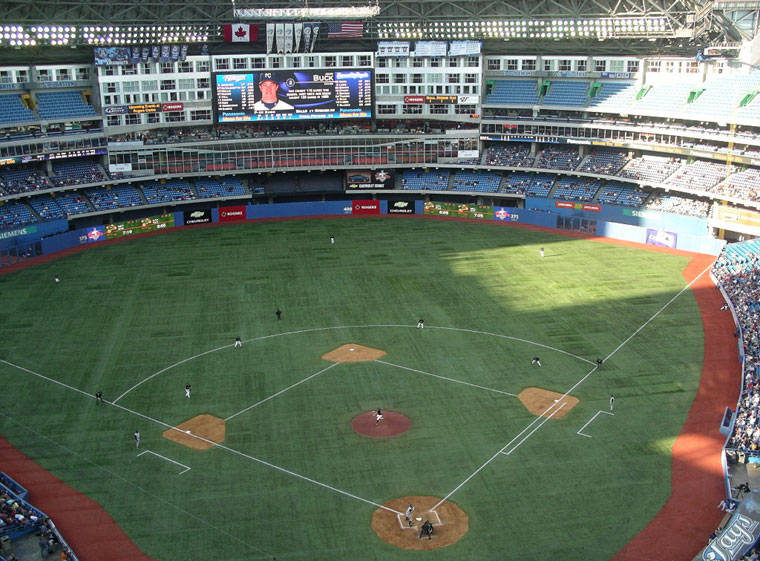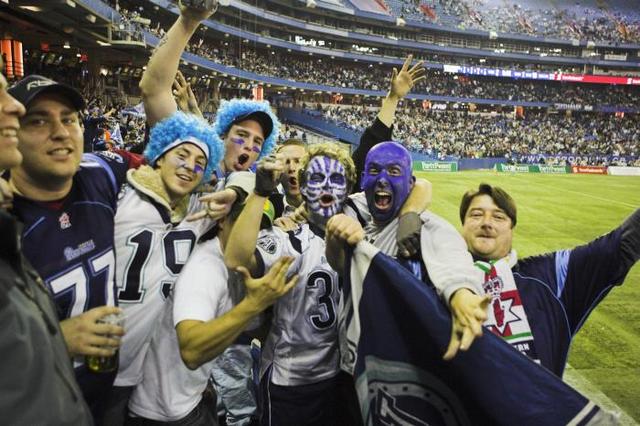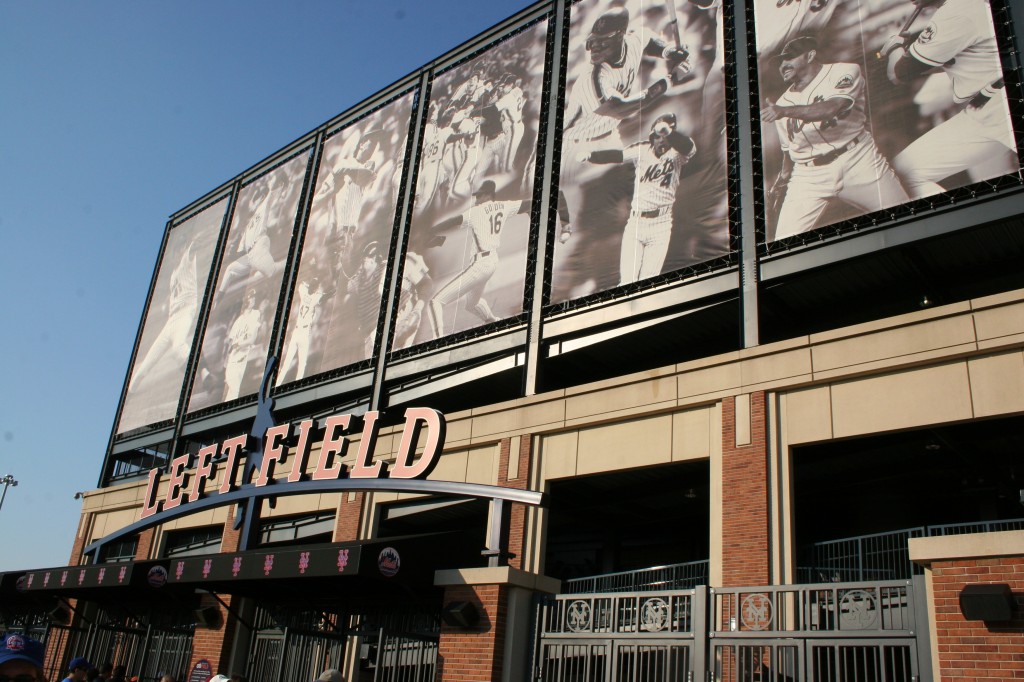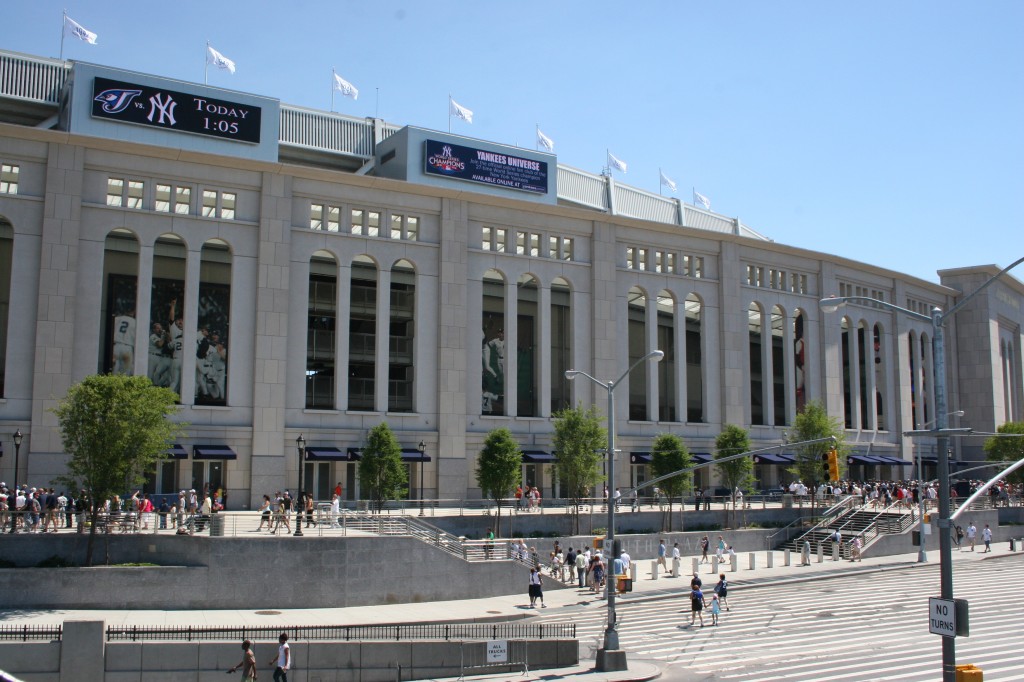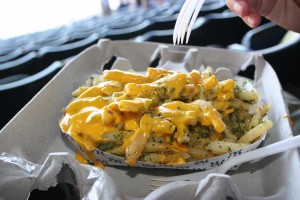My latest for Hockey Prime Time
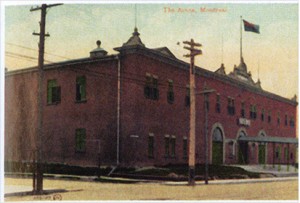
Recognize this place? It's one of my top 10 arenas in NHL history. Hover your cursor over the picture for the answer.
As long-time readers of this blog know, I’m involved with a hockey website called HockeyPrimeTime.com. It’s a great site that offers up news and analysis of the National Hockey League as well as hockey around the world.
Normally I’d be writing some notebooks on the comings and goings of the NHL’s Northeast division.
However, since there’s no hockey on right now we’ve been putting together a series of Top 10 lists. I’ve contributed two articles to the project and I’m really proud of both of them.
Most recent was my list of the Top 10 Arenas in Hockey History. A few recent rinks that made the list are Toronto’s Air Canada Centre, Detroit’s Joe Louis Arena and Philadelphia’s Spectrum.
My other Top 10 list was posted about a week ago and breaks down the Top 10 Most Influential Individuals in NHL history. I had a blast writing it. Like my work with Canada’s Sports Hall of Fame I got to combine my interest in history with my love of hockey.
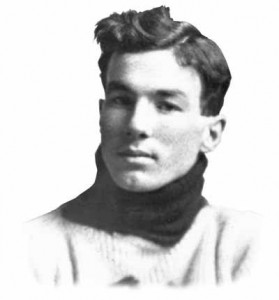
Recognize this guy? He's #9 on my list of the most influential people in NHL history. Hover your cursor over the picture for his name.
I think my list of ten influential people will surprise some people and hopefully it’ll also introduce people to some players and builders who don’t get enough credit for shaping the modern NHL. I also feel that some people will be surprised at who is at the top of the list as the most influential man in NHL history.
In any event, it was a lot of fun putting these lists together.
What do you think the most significant hockey arenas are in hockey history?
What about influential people? Do you think I missed anyone?
Come playoff time, the LeBracle doesn’t change much
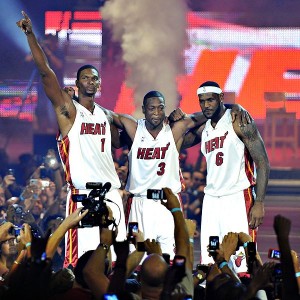 It’s been weeks and the National Basketball Association is still reeling from LeBron James’ hour-long ESPN special called the Decision where he announced that he was joining Dwyane Wade and former-Toronto Raptor Chris Bosh on the Miami Heat.
It’s been weeks and the National Basketball Association is still reeling from LeBron James’ hour-long ESPN special called the Decision where he announced that he was joining Dwyane Wade and former-Toronto Raptor Chris Bosh on the Miami Heat.
The fans of James’ former team, his hometown Cleveland Cavaliers, went crazy. Pure guano. Owner Dan Gilbert wrote an open letter calling the former Ohio hero a coward and compared him to reviled American traitor Benedict Arnold.
Commentators around the Association thought that Gilbert had maybe gone too far, but they understood his position. No one could understand LeBron’s thinking.
Many basketball experts bemoaned the fact that Michael Jordan, Larry Bird and Magic Johnson would have never done something like this. That era of superstars wanted to beat each other, not join forces. The competitive balance of the league had presumably been ruined with Wade, Bosh and James conspiring to move to South Beach.
I agree to an extent. James’ decision to announce on a nationally televised infomercial that he was leaving his hometown team – without first warning the Cavaliers – was a disaster. It was ham-handed and poorly considered. Although Gilbert’s rhetoric was over-the-top, I totally understand why he’s upset.
But this noise about the competitive balance of the league being ruined is ridiculous. Simply put, the NBA doesn’t nearly have the parity of other leagues.
The NBA is not like the National Football League where any team can stun the world and win the Super Bowl. It’s not like the National Hockey League where teams can fall prey to tougher, more determined clubs in the postseason.
A scenario like the 2010 Eastern Conference playoffs where the Washington Capitals and Pittsburgh Penguins – arguably the two best teams in the East – were knocked off by the opportunistic Montreal Canadiens just would never happen in the NBA.
No, every year there are a maximum of four basketball teams that stand a realistic shot at winning the Larry O’Brien Championship Trophy. Look at this breakdown of picks from NBA.com’s experts for the 2009-10 season.
All 12 experts believed that the Boston Celtics, Cleveland Cavaliers and Los Angeles Lakers would win their divisions. Only Vince Thomas picked the Dallas Mavericks and Atlanta Hawks to win their divisions. Otherwise, it was unanimous that the Orlando Magic and San Antonio Spurs would win the Southeast and Southwest.
The Northwest division was the only group to create any kind of controversy with three commentators picking the Denver Nuggets.
When it came to conference champions, the East was perfectly split between Boston and Cleveland, while the Lakers got 10 votes to San Antonio’s two in the West.
I’m a pretty casual basketball fan, and even I would have guessed at the Celtics or Cavaliers facing Los Angeles in the NBA Finals. The Spurs are a bit of a curveball, but they were still a pretty obvious pick.
Not surprisingly, the experts were right. The Lakers did play Boston, after the Celtics had eliminated Cleveland.
So for 2010, we have to assume that the Lakers and Boston are still going to be competitive clubs. Cleveland will be adrift without LeBron, but they will be easily replaced by the Heat as one of the new favourites in the East.
In other words, there are still three teams – and only three teams – that really have any kind of chance to win the championship.
You can say a lot about LeBron James’ move to the Miami Heat. In fact, a lot of people have. But it can’t be argued that it’s ruined the parity of the league.
Ultimately, the competitive balance will stay the same in the NBA, with only a few teams having any kind of legitimate chance at winning the title. It just so happens that now one of those teams are based in Miami and not in Cleveland.
Graphic Novel Review: The Rocketeer: Complete Adventures by Dave Stevens
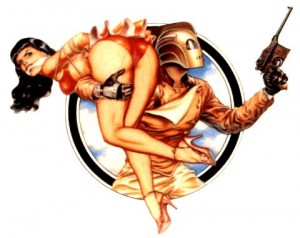 Sometimes it’s hard to articulate your feelings about a book or movie. Other times it just comes to you, like when I recently finished reading The Rocketeer: the Complete Adventures, a reprinting of Dave Stevens’ seminal series that was originally published n 1982.
Sometimes it’s hard to articulate your feelings about a book or movie. Other times it just comes to you, like when I recently finished reading The Rocketeer: the Complete Adventures, a reprinting of Dave Stevens’ seminal series that was originally published n 1982.
I found myself saying: “Really? That’s it?”
Not that it was a knock on the content of the book. The artwork is gorgeous and really pops thanks to the re-colouring done for this edition by Laura Martin. Stevens’ stories are good too, with some decent action as stunt pilot Cliff Secord learns to use a stolen jetpack and win back his best girl, Betty.
Stevens does an excellent job of building a sense of suspense, particularly in the second story “Cliff’s New York Adventure”. It’s a nice touch that he incorporated his hero into the Wold Newton Universe, having him work alongside the Shadow and with associates of Doc Savage.
But that’s the final story. There’s only two.
This was not what I was expecting, at all. As I made my way through the book I was waiting a third and final act that would match up with the ending of the 1991 film adaptation starring Billy Campbell and Jennifer Connelly. That climax never comes.
Instead, the Complete Adventures end with Secord leaving New York City for Los Angeles, with the expectation that he’ll be reunited with his girlfriend Betty. There should be another third to this book, but it just ends on that note. It’s an anti-climactic end to an otherwise enjoyable book.
I guess that’s the rub: those first two stories really are great. They’re fun and pulpy and in many ways are like Alan Moore’s Tom Strong.
But with any of the Tom Strong books there’s a sense that these are just a few of hundreds if not thousands of stories, and theyère much more detailed and fulfilling. The Rocketeer leaves you hanging.
It’s a shame that there wasn’t more to the series, and even worse, there never will be since Stevens passed away in 2008.
All in all, The Rocketeer: the Complete Adventures is a fun read and it has gorgeous artwork, but it’s disappointing that it’s so short and, ultimately, feels incomplete. It's a great concept, I just wish there was more of it.
If you’d like to read a second opinion, I’d recommend Chris Sims’ review of the Complete Adventures from December 2009.
What’s in a sport?
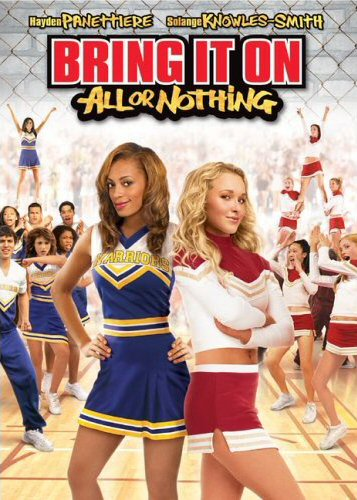 Last week an old chestnut of an argument reared its head when a judge ruled that according to NCAA and Title IX rules competitive cheerleading is not a sport.
Last week an old chestnut of an argument reared its head when a judge ruled that according to NCAA and Title IX rules competitive cheerleading is not a sport.
Quinnipiac University in Hamden, Connecticut had cancelled their women’s volleyball program in favour of the seemingly more lucrative cheerleading team. The volleyball team’s coach sued on the grounds that cheerleading doesn’t meet NCAA rules or the Title IX law.
Using those standards the judge ruled that volleyball is more of a sport than its peppy replacement.
Almost immediately there was an outcry from the cheerleading community, crying foul and defending the honour of their beloved athletic pursuit. This brings us to that previously mentioned chestnut: what constitutes a sport?
Hampton Stevens wrote a well-considered response to the debate for the Atlantic’s website today. He argues that cheerleading is not a sport because the winners are decided by a subjective judging system.
In Stevens’ mind there are three qualities to a sport:
- People compete at it.
- Computers can't do it.
- Aesthetics don't count.
He cites examples too. Chess is not a sport because computers can play it. Croquet is a sport though, because there is a clear objective measure of the winner.
I agree with Stevens in principle. In fact, a source of much acrimony in my household this winter was my ongoing criticism of several of the “non-sports” at the Vancouver Olympics.
Like Stevens, I place a great deal of importance on the objectivity of the activity. As soon as judges are holding up signs with scores, I lose interest. However, even I can see a glaring omission in Stevens’ argument: boxing and other combat sports regularly go to a judges’ decision.
If there’s a close match, the judges have to decide the bout based on who dominated the fight, particularly which boxer landed the most head shots on their opponent. In other words, they have to decide how well each pugilist boxed. They have to judge the match on the aesthetics of each fighter’s strategy and style.
Judges miss landed blows and there’s often some interpretation of what is and isn’t a head shot. Also, we’d be kidding ourselves if we thought boxing judges were not corrupt or biased.
I’m not saying that boxing is as subjective as cheerleading or figure skating, but I think it’s important to acknowledge that all sports have a certain aesthetic aspect to them – even in the most cut-and-dry sports like sprinting judging can play a significant role in false starts and photo finishes.
That said, Stevens and the Connecticut judge are both right: cheerleading is far too subjective to be considered a sport.
Twitter buzz - While writing this article I posed the question to my Twitter followers:
@jchidleyhill Is cheerleading a sport? What constitutes a sport?
I got a few responses from my followers, including:
@rubedawg83 - Competition based on participants using BOTH physical and mental tools. Cheerleading - Yes, Chess & Fishing – No
@ToryBachmann - [...] Yes cheerleading is a sport
@Novinarwriting - Hmm Hard to take 'sports' shows like pool/darts/poker seriously
@twharry - Any sort of athletic activity where you can legitimately pull a groin while competing is a sport.
Stadium Review: Rogers Centre
As regular readers of this blog know, I’ve been to several ballparks in this past year. Last summer I went to Detroit’s Comerica Park, while this July I went to New York City’s New Yankee Stadium and Citifield.
However, I had never considered reviewing the Rogers Centre, the ballpark in my hometown Toronto. Not because it’s unworthy, but because I was worried that I would be too hard on a stadium that has become a scapegoat for the attendance woes of the Toronto Blue Jays as well as the Canadian Football League’s Toronto Argonauts.
But on Tuesday night I returned to the former SkyDome after a month without attending a Jays home game and I realized, hey, this isn’t so bad.
First of all, I was buoyed by the recent ESPN study that found the Rogers Centre to be one of the cleanest stadiums in all of professional sports, a small club that includes the Air Canada Centre, home of the Toronto Maple Leafs and Toronto Raptors. There are only nine other venues that have spotless health records.
Also, after my 45 minute subway ride to Citifield in Queens, New York, I have found a new appreciation for the downtown location of the Rogers Centre. It’s a five minute walk through a dedicated passage from Union Station, giving the ballpark access to the Toronto Transit Commission and the provincial GO Trains.
The neighbourhood is ideal for out-of-towners hoping to kill some time before the opening pitch. Right beside the ballpark is the CN Tower, the second tallest structure in the world. Across the street is the Steam Whistle Brewery that serves one free sample beer to any visitor over the age of 19 and also has a variety of antique train engines.
Although it lacks the charm of the newer retro-styled parks like Citifield, Comerica and New Yankee Stadium, the Rogers Centre has all the same amenities with large and conveniently placed washrooms that are easier to find than the facilities at the American stadiums.
Of course, the former SkyDome’s big draw is its roof. Although it seems like a quaint 1980s concept, the retractable dome remains practical in a city that can have snow in April. The closed dome also means that the stadium is useful all year around.
Don’t get me wrong, there Rogers Centre does have its drawbacks, especially the feeling that it is always half-empty. It can’t be helped - its seating capacity is fifth largest in Major League Baseball but Toronto averages the fourth smallest crowd in the Majors. As a result, the stadium seems deserted for most games.
As far as service goes, the staff at concessions and in the stands are fine. However, the public announcer and the rest of the in-game entertainment seem desperate to energize the staid Toronto crowd. They don’t seem to realize that Torontonians are almost always quiet at concerts, festivals and other events. It’s just in the city’s character.
Unfortunately, this year they’ve tried to boost the crowd’s excitement by cranking the music as loudly as possible, stifling conversation and drowning out any attempts at chants or cheers from the crowd. The stadium may not be quiet, but the crowd is. It distracts from the action on the field and takes away from baseball’s pastoral roots.
Toronto’s Rogers Centre is far from perfect, but it’s also not the worst ballpark I’ve ever been to. It’s accessible by public transit and is reasonably priced. It’s clean and family friendly. Unlike Fenway Park or Yankee Stadium it’s better suited to locals than visiting fans, but that’s not a serious offence for a stadium. It serves the city of Toronto admirably.
Jersey Shore is taking its “talent” to South Beach
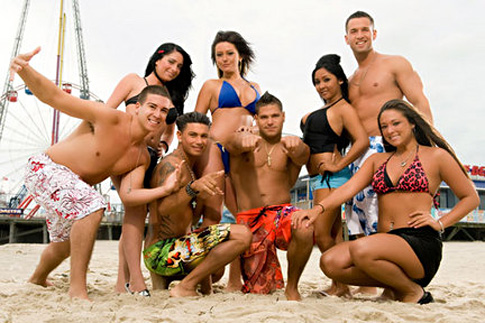 Tonight is one of the most anticipated television events of the summer: the return of the Jersey Shore.
Tonight is one of the most anticipated television events of the summer: the return of the Jersey Shore.
The cast of the mega-popular MTV reality show have been brought back for a second season, this time making like Lebron James and taking their talents to South Beach, Miami.
Just like James’ decision to join Chris Bosh and Dwyane Wade on the Miami Heat, Jersey Shore is surrounded by controversy.
For those somehow unfamiliar with the Jersey Shore phenomenon, it’s a really simple concept: MTV put eight young people, primarily of Italian-American descent, into a house on the boardwalk of Seaside Heights, New Jersey.
All the cast had to do was work together at a local novelty t-shirt shop, go out together and, of course, allow the cameras to follow them wherever they went.
As young people are wont to do, they got drunk, hooked-up with each other or people at the local night spots and, above all else, got into fights, culminating in cast member Ronnie Ortiz-Magro being arrested for aggravated assault.
Many Italian groups protested the show, especially Unico National, who wrote a formal letter to MTV asking the network to cancel the show before its release on the grounds that Jersey Shore was a “direct, deliberate and disgraceful attack on Italian Americans.”
More negative publicity swirled around the program when previews showed petite cast member Nicole “Snooki” Polizzi taking a punch to the face from a drunken party-goer at a local club. Although Snooki was physically unharmed, the episode aired with the assault cut out and bookended with public service announcements about the dangers of domestic violence.
Despite these controversies, the show took off in popularity and phrases like “The Situation”, “Grenade” and “Fist Pump” have entered the popular lexicon. Although it has a loyal following, there are many who cannot stand the show.
Those critics are right. At its heart, Jersey Shore is trash television that appeals to the lowest common denominator.
But ask any archaeologist or anthropologist – a culture’s garbage can be incredibly revealing about society, and Jersey Shore is no different.
The show provides a glimpse into a world full of buff bodies and fragile egos, where a total lack of self-awareness meets with a hunger for fame with explosive results.
A close examination of Jersey Shore can serve as a launching pad for discussions of all kinds of serious issues. Topics can include the educational system in the United States after hearing the cast mangle the English language, the state of healthcare in North America as they spend an equal amount of time working out and destroying their skin with tanning beds or religion as Pauly “DJ Pauly D” DelVecchio tries to reconcile his Israeli girlfriend’s Judaism with his own Roman Catholic upbringing.
Most intriguing is the casts attitudes towards sexuality, gender roles and family.
For example, although all the cast members enjoy some level of sexual promiscuity, they also prize loyalty to one’s partner: Sammi "Sweetheart" Giancola is incredibly possessive of her boyfriend Ronnie, but offers no objection when Jennifer “JWoww” Farley cheats on her boyfriend with Pauly D.
Similarly, Angelina “Jolie” Pivarnick objects when her single male roommates bring home some young ladies to enjoy the house’s hot tub. However, it’s later revealed that her boyfriend is a married man and it’s implied that she had a fling with Michael "The Situation" Sorrentino on their first night in the house.
Angelina made a quick exit from the show after a fight with her boyfriend “forced” her to miss a shift at work, resulting in her eviction from the house. Relieved that she’d been ousted from the house, the remaining roommates declared that they were a family – having only lived together for approximately one week.
At one time or another all of the female castmates declare that they want to settle down and start a family with a good guy. Most desperate to find marital bliss is Snooki, who spent the entire season trying to bring men home from local clubs.
“My ideal man would be Italian,” Nicole said in the second episode of the series. “Dark, muscled ... juice-head guido.”
When Vinny Guadagnino’s family came to visit the Shore House, all the female roommates expressed their admiration for her as she cooked for them and cleaned their house, even cutting her son’s food for him. That’s how a proper woman acts, in their mind.
Yet they continued to do backflips in mini-skirts and thongs, make-out with random men (and sometimes women) and have one night stands with strangers.
Most fans of the show call Jersey Shore a car wreck – their morbid curiosity prevents them from changing the channel - but I think it’s the inherent hypocrisy in the actions of the cast that is fascinating.
Where do these people come from? How did they develop such a jaundiced view of the world? What do their parents think of the show? It’s a fountain of rhetorical questions.
It’s a stunning look at a segment of North American culture that is engrossing and depressing, educational and trashy, entertaining but dulling. The second season has big shoes to fill, but I expect it’ll be equally fascinating, at the very least to see how fame has altered the housemate’s already twisted perspective on reality.
Stadium Review: Citifield
Sitting in the bleachers at Citifield, home of the New York Mets, is a world away from watching a game across the East River at Yankee Stadium.
Just getting there takes 45 minutes by subway train, taking you far from the skyscrapers of Manhattan to the relatively open space of Queens. Given its proximity to LaGuardia airport, the drone of planes is in constant competition with the organ as opposed to the bass-heavy hip-hop and rock played by the Yankees.
Most striking of all, the atmosphere is friendly and family-oriented. It's hard to believe that it's the same city.
Although the exterior to Citifield is rather bland, the interior has an eclectic, retro-feel. The seating sections are layered on top of each other and crammed into odd angles, although the seats themselves still have lots of leg room.
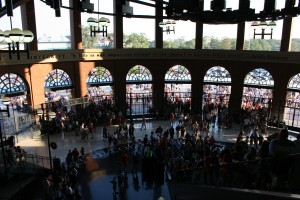
The Jackie Robinson Rotunda serves as the main entrance to Citifield and is lined with inspiring quotes from the Hall of Famer.
Spaces like the Jackie Robinson Rotunda tie the history of the Mets to the Brooklyn Dodgers, their spiritual ancestors of in the National League. That retro vibe translates well into Citifield’s concourses that are full of modern concessions modelled to look like traditional ballpark stands.
I attended New York’s heartbreaking 8-6 loss to the Cincinnati Reds on July 5th. Since the Mets hadn’t played on Independence Day, the stadium was in full patriotic splendour. Although the Yankees had a stirring tribute to Lou Gehrig the day before, as well as the traditional singing of God Bless America, the Mets topped them in their Fourth of July celebrations.
Before the opening pitch at Citifield they had members of the U.S.O. singing the anthems of the various divisions of the American armed forces. Then they had a Lieutenant-General swear a group of recruits into the army.
During every stoppage of play they ran video of soldiers from Queens and Brooklyn in Iraq and Afghanistan greeting their families who’d been given seats at the game. It was a touching and heartfelt display, and really illustrated the connection between the Mets, their fans and those serving overseas.
That’s what was nice about the entire Citifield experience – it really balances the old and new and emphasizes the connection between the Mets and their fans in the boroughs of New York City.
Also, as a relatively neutral observer, they succeeded in drawing me in to the game and I found myself rooting for the home team despite myself.
Although Yankee Stadium has more history and significance behind it, as a venue for watching a baseball game I’d take Citifield any day of the week.
Stadium Review: New Yankee Stadium
Visiting Yankee Stadium – the new one, that is – and watching the Pinstrippers host the Toronto Blue Jays was the focal point of my recent trip to the New York City. It was the fourth major league ballpark I’ve ever been to and easily the most awaited.
Opened in 2009, the so-called New Yankee Stadium was built across the street from the original Yankee Stadium. I had tried in vain to get tickets at the elder stadium before it was knocked down, but the only available tickets cost an arm and a leg through scalpers.
I missed out on the House that Ruth built, but did make it to the underwhelming House that Jeter built.
Don’t get me wrong, New Yankee Stadium has a lot going for it.
Architecturally, it’s beautiful. The ballpark stands as a monument to the impressive legacy of Old Yankee Stadium, mimicking many of the original field’s most distinctive qualities and emphasizing that this is the home of the most successful franchise in baseball history.
The architectural team of Populous insured that the dimensions of the field are exactly the same as the old park, although the new seating is slightly smaller the original field at 52,325 (including standing room) versus 56,936.
Also, as you can imagine, the New York Yankees know what they’re doing when staging a baseball game. Every little detail during the game was skilfully handled, from the anthems to the TV timeout features.
Charming touches abounded, especially when the Yankees’ current roster recited Lou Gehrig’s famous speech to commemorate the anniversary of his final game with the club.
And the food, my God, the food. Every stadium has a signature dish. Something that is distinctly theirs. At Yankee Stadium it’s garlic French fries with melted cheese. It’s gooey, salty, cheesey and above all else potent enough to guarantee some space on the subway ride home.
Populous did a lot to emphasize the history of baseball in New York City including moving Monument Park from the older building, creating a Yankee Museum and, of course, a centralized merchandise store off the stadium’s main concourse.
But that’s one of the key problems with New Yankee Stadium.
In their slavish devotion to replicating the style and design of the older building, they did little to improve on the old stadium. Yes, everything is new and shiny but facilities are few and far between.
As a result, there are long lines just about every step of the way. Crowds arrive early, so there is a long wait for most of the features of the park, especially Monument Park, the Yankee Museum and the merchandise outlet.
In fact, the line for Monument Park was cut off an hour and a half before the opening pitch because security personnel needed to be able to clear it out before game time. Same thing with the Yankee Museum – lines had to be cut off because they were so long.
I’ll allow that I went on Independence Day, when most of the crowd was probably from out of town and therefore more likely to go to the touristy corners of the stadium, but surely they could have predicted that those would be crowded sections of the stadium.
Instead, the entrance to Monument Park is in the middle of a cramped corridor. Compared to other contemporary stadiums like cross-town rival Citifield or Detroit’s Comerica Park, which put an emphasis on wide-open space and breezy walkways, it’s a confusing choice.
Ultimately, it’s worth going to Yankee Stadium to say “I’ve been there.” Visitors should expect high prices, long lines and cramped quarters. I would not want to be a Yankees fan and have to attend more than one game per season at that ballpark.
